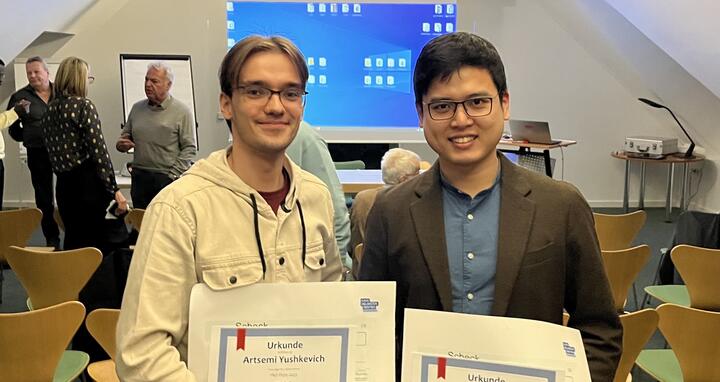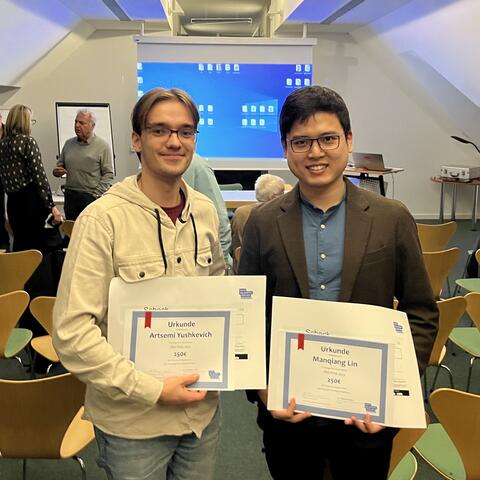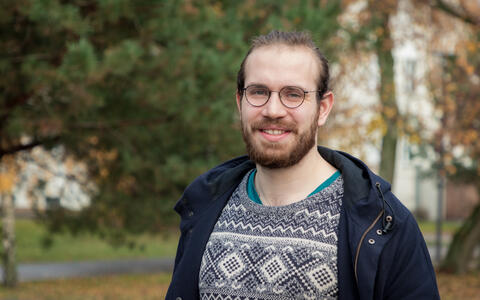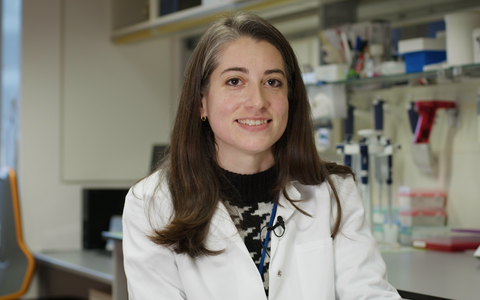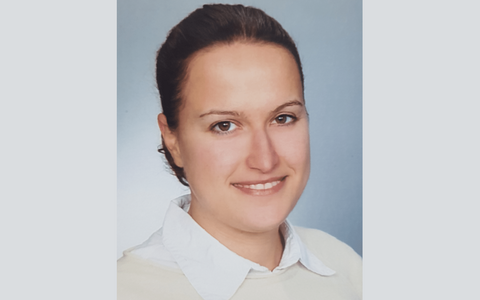Awards for the best PhDs and Postdocs of 2023
Two PhDs are receiving the 2023 PhD Prize for their scientific achievements — Manqiang Lin and Artsemi Yushkevich. They were selected by the Graduate Committee of the Max Delbrück Center with the support of the PhD Office. The award comes with a cash prize of 250 euros, donated and presented by the Association of Friends.
Artsemi Yushkevic and Manqiang Lin with their prizes.
Dr. Manqiang Lin worked on gastrointestinal assembloids in the "Gastrointestinal Barrier, Regeneration and Carcinogenesis" research group of Professor Michael Sigal at the MDC-BIMSB. The gut has a complex structure, which includes characteristic indentations — called crypts. The team— including first author Manqiang Lin — replicated these crypts. In the journal “Nature Communications,” the researchers describe how the cells communicate with each other and how people with intestinal disorders could benefit from these findings.
Manqiang Lin, et. al. (2023): "Establishment of gastrointestinal assembloids to study the interplay between epithelial crypts and their mesenchymal niche." Nature Communications, DOI: 10.1038/s41467-023-38780-3
Artsemi Yushkevich further developed evaluation techniques for cryo-electron tomography and sub-tomogram averaging in the "In Situ Structural Biology" working group of Professor Misha Kudryashev at the Max Delbrück Center. He has published the protocols as one of the first authors in “Nature Communications.” Thanks to advanced techniques like these, three-dimensional imaging of cells or macromolecules in their natural environment is possible in structural biology.
Nikita Balyshev, Artsemi Yushkevich, et. al. (2023): "Streamlined structure determination by cryo-electron tomography and subtomogram averaging using TomoBEAR." Nature Communications, DOI: 10.1038/s41467-023-42085-w.
Outstanding postdocs
The Postdoc Awards recognize outstanding scientific work as well as a commitment to the Max Delbrück Center and its community.
Hendrik Bartolomaeus
The first prize, together with a cash award of 200 euros, is going to Dr. Hendrik Bartolomaeus. The scientist, a member of Dr. Nicola Wilck's lab researches interactions between diet, gut bacteria and the host organism, as well as the immune system in diseases of the heart and kidneys. Hendrik Bartolomaeus has successfully attracted third-party funding: a start-up grant from the DZHK, for example, and funds for a BMBF joint project investigating the role of a common receptor and nutrition in inflammation using the example of chronic renal insufficiency. He is part of a collaborative project that aims to use quantum technology to improve cancer diagnostics, was a co-author on three high-profile publications in 2023, and organizes a journal club on the latest publications in the field.
Eleonora Adami
The second prize, along with 100 euros, is awarded to Dr. Eleonora Adami. As a part of Professor Norbert Hübner's lab, she investigates which cellular and molecular changes can be detected in human heart tissue in patients who have had myocarditis following SARS-CoV-2 infection or COVID-19 vaccination. She has been involved in the Leducq Foundation's "Transatlantic Networks of Excellence" program, was a speaker at the Long Night of Science, and exhibited her art there. She continues to optimize her skills in science communication in the Max Delbrück Center's "SCOTT Training." Lastly, she is very involved in supervising master's students and doctoral candidates.
Ulrike Löber
A further prize of 100 euros is awarded to Dr. Ulrike Löber, a researcher in Professor Sofia Forslund's lab. The team deals with the interactions between host and microbiome in cardiovascular diseases. Ulrike Löber not only contributed to seven publications and organized the working group's retreat, she is also very committed to making her science accessible to the public — for example, through "Soapbox Science" presentations and Instagram videos.

